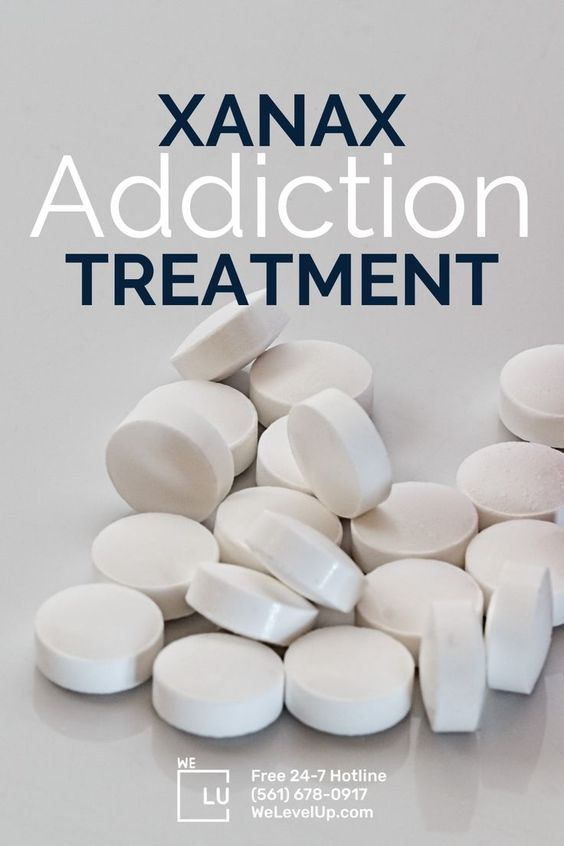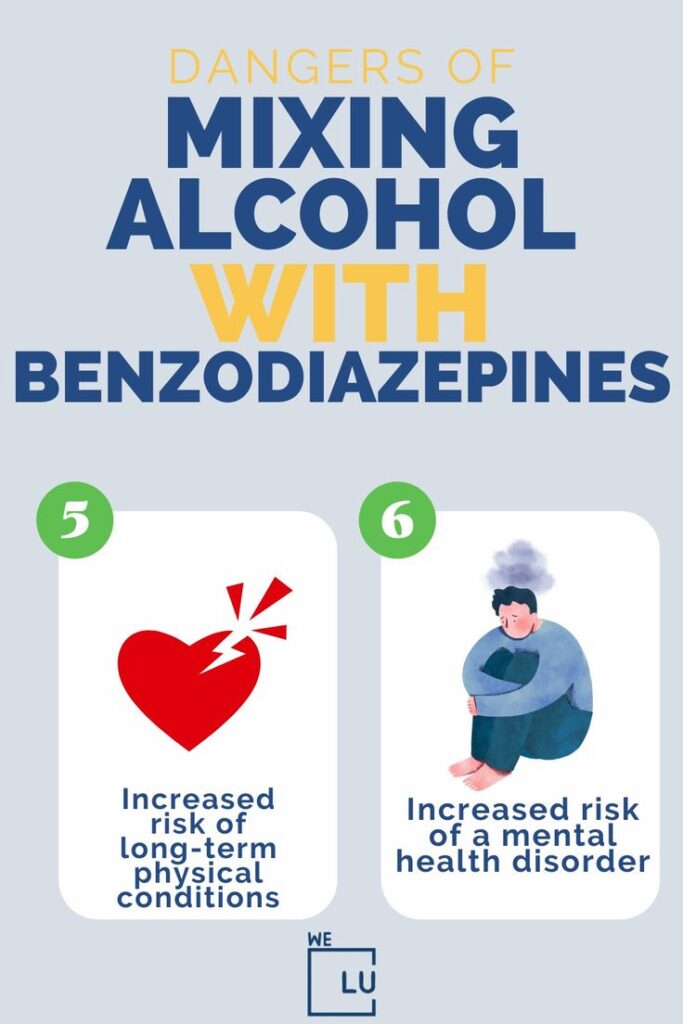What is Xanax?
Xanax (Alprazolam) is a brand-name medication in a drug class known as Benzodiazepines. It is given to help manage anxiety and panic disorders, insomnia, and seizures. It can become addicting by taking too many doses at once or asking a healthcare professional to prescribe a higher dosage. An individual can experience Xanax withdrawal side effects and symptoms.
Side Effects Of Xanax
The side effects of Xanax can vary in severity and affect individuals differently. Here are some common side effects:
- drowsiness
- light-headedness
- headache
- tiredness
- dizziness
- irritability
- talkativeness
- difficulty concentrating
- dry mouth
- increased salivation
- changes in sex drive or ability
- nausea
- constipation
- changes in appetite
- weight changes
- difficulty urinating
- joint pain
There are some serious adverse effects of taking it. If an individual experiences the following symptoms, they should get medical treatment immediately.
- shortness of breath
- seizures
- severe skin rash
- yellowing of the skin or eyes
- confusion
- problems with speech
- problems with coordination or balance
Xanax Addiction
Xanax can be addictive mostly because it can give a euphoric feeling that someone can always crave. Below are some side effects:
Tolerance: If multiple doses are taken for long periods, someone can develop a higher tolerance for the side effects.
Dependence: The body can become dependent on Xanax for it to function daily.
Misuse: Taking higher doses than prescribed or taking them more frequently can give someone the euphoric feeling that this medication can temporarily give.
Co-occurring Disorders: People with mental health issues are more likely to become addicted to Xanax.
Drug Seeking Behavior: They can visit multiple healthcare professionals to get prescriptions or buy Xanax illegally.
Neglect Responsibilities: Someone addicted to Xanax can neglect their daily duties like work or school as they try to get Xanax first before anything.
Social Withdrawal: Xanax addiction can lead to someone withdrawing themselves from social activities. This could be to hide their drug use.
Physical Effects: Xanax can lead to physical effects like drowsiness, dizziness, memory problems, and mood swings.
Get addiction counseling that works. Discover professional help from We Level Up Texas Treatment Center’s addiction and mental health therapists. Start getting support with a free call to our addiction hotline.

Skip To:
Learn More:
- Xanax Dosages
- Xanax And Alcohol
- What Happens if You Snort Xanax? Dangers of Snorting Xanax
- Alcohol Withdrawal Symptoms
- Benzo Addiction
- Benzo Detox
- Anxiety Treatment Therapy, Medications, Coping Tips & Strategies
- What Does Anxiety Feel Like? Why It Happens? Signs & Causes
- Anxiety Medication and Alcohol
Get Help. Get Better. Get Your Life Back.
Searching for Accredited Drug and Alcohol Rehab Centers Near You? We Level Up Texas Is Opening Soon!
Even if you have failed previously and relapsed, or are in the middle of a difficult crisis, we stand ready to support you. Our trusted behavioral health specialists will not give up on you. When you feel ready or just want someone to speak to about therapy alternatives to change your life call us. Even if we cannot assist you, we will lead you to wherever you can get support. There is no obligation. Call our network hotline today.
FREE Addiction Hotline – Call 24/7What Are The Symptoms Of Xanax Withdrawal?
Xanax withdrawal symptoms are different for everyone, and it depends on the dosage, duration of use, and physiological makeup. These symptoms occur when someone who has been using Xanax regularly suddenly stops or reduces their dosage. Common Xanax withdrawal symptoms include:
Effects Of Xanax Withdrawal
- Heightened feelings of nervousness, fear, and restlessness.
- Sleep disturbances like insomnia and vivid dreams or nightmares.
- An individual might experience irritability, agitation, and mood swings
- Physical symptoms like tremors, shaking, muscle stiffness and aches, headaches, sweating, nausea, and vomiting.
- Some can experience difficulty concentrating, memory problems, confusion, and disorientation. They can also undergo changes in their senses, such as becoming sensitive to light, sound, or touch.
- Xanax can lead to heart problems like heart palpitations, a racing heart, or fluctuation in blood pressure.
- Seizures can be triggered in severe cases. This mainly happens to individuals who have been using high doses of Xanax or have a history of seizures.
- Hallucinations are rare but life-threatening to individuals. This includes confusion, rapid heartbeat, agitation, and elevated blood pressure.

Get Your Life Back
Find Hope & Recovery. Get Safe Comfortable Detox, Addiction Rehab & Dual Diagnosis High-Quality Care.
FREE Addiction Hotline – Call 24/7How Long Does Xanax Withdrawal Last?
Xanax withdrawal is different for everyone. There are also some factors to consider. This includes the dosage of Xanax taken, how long they are using it, the person’s physiology, whether they are tapering off gradually or stopping abruptly, and whether they receive medical treatment or support during the process.
Timeline of Xanax Withdrawal
Early Withdrawal Symptoms (First 1-4 Days): Most of the time, the withdrawal symptoms begin within hours to a few days after the last dose. The early symptoms are anxiety, agitation, insomnia, tremors, sweating, nausea, vomiting, muscle stiffness, and headaches.
Peak Withdrawal Symptoms (First 1-2 Weeks): This is the height of the Xanax withdrawal symptoms, and it starts within the first week of stopping the medication. During this time, someone can experience severe anxiety, panic attacks, mood swings, physical discomfort, and mental problems.
Subacute Withdrawal (2 Weeks to Several Months): Symptoms can gradually subside after the peak withdrawal phase. However, some people can experience lingering symptoms for weeks or months. They can have constant anxiety, mood swings, insomnia, and mental impairments are the main symptoms during this phase.
Lengthy Withdrawal (Months to Years): There are some cases where people can experience withdrawal symptoms for a little longer. This can be persistent for an extended period after stopping Xanax. Most of these symptoms include anxiety, depression, insomnia, mood swings, mental problems, and craving for the medication. Xanax withdrawal symptoms can last for months to years, although the severity of it mainly decreases over time.
It’s vital for those going through Xanax withdrawal to know that the timeline and severity of the symptoms can vary from person to person. Some people can experience mild withdrawal symptoms that resolve quickly, while others might experience more severe or lengthy symptoms that require the help of a healthcare professional and support.
Opening Soon! First-Class Facilities & Amenities
World-Class High-Quality Addiction & Mental Health Rehabilitation Treatment
Coming Soon! Rehab Centers TourRenowned Addiction Centers. Serene Private Facilities. Inpatient Rehab Programs Vary.
FREE Addiction Hotline – Call 24/7Proven recovery success experience, backed by a Team with History of:
15+
Years of Unified Experience
100s
5-Star Reviews Across Our Centers
10K
Recovery Success Stories Across Our Network
- Low Patient to Therapist Ratio
- Onsite Medical Detox Center
- Comprehensive Dual-Diagnosis Treatment
- Complimentary Family & Alumni Programs
- Coaching, Recovery & Personal Development Events
Using Xanax For Alcohol Withdrawal
Using Xanax for alcohol withdrawal is not naturally suggested as the first line of treatment. This medication can help relieve symptoms of alcohol withdrawal, but it carries some dangers of its own. It can become addictive, and someone can depend on it too much. Plus, stopping Xanax after using it for a small amount of time can lead to withdrawal symptoms similar to alcohol withdrawal and complicate the recovery process.

Be aware of mixing Alcohol with Xanax (Benzodiazepines), for it can increase the risk of long-term physical conditions and mental health disorders.
- Increased Risk of Overdose: Both Xanax and alcohol are Central Nervous System depressants. When they are used together, they can improve each other’s side effects. However, this can lead to respiratory problems, coma, and even death.
- Potential for Addiction: Xanax has a high potential for addiction and dependence. Using this medication to help during alcohol withdrawal can make it more addictive and force someone to become more dependent on Xanax. This can cause another substance use disorder.
- Severe Withdrawal Symptoms: Alcohol withdrawal can result in some serious symptoms. This can include seizures and hallucinations. Xanax might not be able to relieve these painful withdrawal symptoms.
- Interference with Recovery: Using Xanax to help with alcohol withdrawal symptoms can interfere with a person’s reason to seek medical treatment for alcohol addiction.
- Risk of Rebound Symptoms: Suddenly stopping Xanax after using it for a short amount of time can lead to withdrawal symptoms that are similar to alcohol withdrawal symptoms. This can complicate the recovery process and make it a little more challenging
Many healthcare providers will recommend medications with longer half-lives, such as Diazepam (Valium) or Chlordiazepoxide (Librium), instead of using Xanax. Using this medication for alcohol withdrawal is not safe or effective compared to the other treatment options that are available. It’s vital for people undergoing alcohol withdrawal to seek medical advice and help from healthcare professionals. It would be more helpful to talk to those who are experienced in medicine or drug addiction. This is to make sure there’s a safe and successful recovery process.
Xanax Treatment And Support Options
Treatment and support options for Xanax addiction can be a combination of medical interventions, therapy, support groups, and lifestyle changes. Here are some options for people who want help with their addiction.
Medical Detoxification
People who suffer from Xanax addiction can get help by going through the medical detoxification process that a healthcare professional supervises. Detoxification is a method that removes substances like drugs and alcohol from the body. To help manage the withdrawal symptoms further and lower the possibility of going through other serious complications, different medications, like anticonvulsants or beta-blockers, can be used. They can help relieve specific symptoms or medical conditions. The detox process can also involve slowly tapering off the drug under the supervision of healthcare professionals. This can help minimize the withdrawal symptoms and ensure a safe detox process.
Inpatient/Outpatient Rehab Programs
Inpatient rehab programs give intense, round-the-clock care to people who are struggling with Xanax addiction. These programs offer a structured environment where people can get medical support, supervision, and therapy. It’s also a place where they can get help to address their addiction and underlying issues. These programs are for people who are constantly depending on Xanax or went “cold turkey” by stopping the medicine immediately. Outpatient rehab programs are more flexible and for people who do not require 24-hour care. These programs are for those who aren’t as dependent and don’t have more severe withdrawal symptoms. Most of these programs include individual counseling, group therapy, and education about addiction and recovery.
Therapy and Support Groups
There are many different types of therapy that a person can benefit from when it comes to Xanax addiction. This includes Cognitive-Behavioral Therapy (CBT), Dialectical Behavior Therapy (DBT), and motivational interviewing. Therapy can help people identify or handle any underlying triggers, learn coping skills, and develop healthier ways of managing stress and anxiety. Many support groups like Narcotics Anonymous (NA) or SMART Recovery can provide peer support. They want people to recover from Xanax addiction by attending support group meetings. This therapy can help people feel less isolated, share experiences, and learn from others who have faced the same challenges.
Medication Assisted Treatment (MAT)
In some cases, healthcare professionals can prescribe different medications to help with Xanax addiction treatment. Gabapentin or antidepressants can help manage withdrawal symptoms or manage mental health illnesses. They can also provide a safer tapering process by replacing Xanax with longer-acting drugs just like it, such as Valium or Librium. Both medications can reduce severe Xanax withdrawal symptoms and minimize the risk of more serious complications. They can also help reduce cravings, which can make it easier for individuals to refrain from using Xanax during their recovery process. By managing their cravings, MAT can support someone in maintaining soberness and prevent relapse.
Holistic Approaches
Holistic approaches to addiction treatment are ways to help with someone’s physical, mental, emotional, and spiritual well-being. These approaches are mostly used alongside the normal addiction treatment methods. This includes mindfulness practices, yoga, acupuncture, and nutritional therapy. Here are some holistic approaches that help treat Xanax addiction.
- Proper Nutrition
- Exercise and Physical Activity
- Mindfulness and Meditation
- Acupuncture and Acupressure
- Herbal Remedies and Supplements
- Art Therapy and Creative Expression
- Spiritual Support

Life After Xanax
Navigating through life after addiction is a process that can require going to treatment constantly and a full-time commitment. It’s essential to continue engaging in activities and practices to help with sobriety. It will help to attend all or most support group meetings and therapy sessions. This will help maintain a healthy lifestyle and keep someone focused on recovering. Building and maintaining a solid support network can also help by including family, friends, peers in recovery, sponsors, counselors, and healthcare providers. They can help make it more accessible so that people can continue the journey to recovery.
Developing healthy coping mechanisms to manage stress, anxiety, and other triggers can help maintain sobriety. People can practice mindfulness, relaxation techniques, exercise, hobbies, and creative outlets and seek professional help when necessary. They must take care of themselves first in order to help with their physical, emotional, and mental well-being. Someone would need to get adequate sleep, nutrition, and exercise while practicing self-compassion. Engaging in activities that bring joy and fulfillment can also help to give them a sense of purpose and meaning in their life.
A lot of people struggle with Xanax addiction as a way to cope with any other underlying issues. This can include anxiety, trauma, depression, or other mental health concerns. Managing these issues through therapy, counseling, and other supportive interventions can help prevent relapse. Someone’s life after addiction can offer personal growth and change opportunities. They can form goals, pursue passions and interests, volunteer, give back to the community, and rebuild relationships with loved ones.
Identifying and avoiding triggers that can lead to cravings or relapse is a way to help as well. However, someone might have to avoid certain people, places, or situations that can remind them of when they were using Xanax. They would need to have boundaries and develop techniques to cope with their triggers effectively. Someone can continue to pursue an education, undergo vocational training, have a career betterment, and get personal development opportunities to help with their mindset and purpose in life.

People can practice gratitude and reflection to help them feel appreciated for their progress. They can reflect on their journey, celebrate small or large goals, and express gratitude. This will help support their positive mindset and strength in facing future challenges. They can also find fulfillment and purpose in helping others who are struggling with addiction. Sharing their experiences, offering support, and volunteering in recovery-related activities can be a meaningful way to give back and stay connected to the recovery community.
Overcoming Xanax addiction is often a challenging process to go through alone. Many people experience relapses during Xanax withdrawal in an attempt to relieve symptoms and satisfy cravings. However, you can manage Xanax withdrawal symptoms and successfully recover with detox and rehab therapy and a strong support system at the We Level Up Texas Treatment Centers. If you require assistance with your rehab journey, contact a We Level Up Treatment professional now. Your call is free and confidential.
Get a free rehab insurance check without any obligation.
Opening Soon! World-class, Accredited, Anticipated 5-Star Reviewed, Effective Addiction & Mental Health Programs. Complete Behavioral Health Inpatient Rehab, Detox plus Co-occuring Disorders Therapy.
FREE Addiction Hotline – Call 24/7End the Addiction Pain. End the Emotional Rollercoaster. Get Your Life Back. Start Drug, Alcohol & Dual Diagnosis Mental Health Treatment Now. Get Free No-obligation Guidance by Substance Abuse Specialists Who Understand Addiction & Mental Health Recovery & Know How to Help.
Xanax Withdrawal Symptoms, Xanax & Alcohol. Is Xanax Withdrawal Safe Informational Video?
Start a New Life
Begin with a free call to an addiction & behavioral health treatment advisor. Learn more about our dual-diagnosis programs. The We Level Up treatment center network delivers recovery programs that vary by each treatment facility. Call to learn more.
- Personalized Care
- Caring Accountable Staff
- World-class Amenities
- Licensed & Accredited
- Renowned w/ 100s 5-Star Reviews
We’ll Call You
Search We Level Up Xanax Withdrawal Symptoms, Detox, Mental Health Topics & Resources
Sources
- MedlinePlus. (2021). “Alprazolam“.
- Tobin T. George, Jayson Tripp. National Library Of Medicine. (2023). “Alprazolam“.
- Nassima Ait-Daud, Allan Scott Hamby, Sana Sharma, Derek Blevins. National Library Of Medicine. (2018). “A Review of Alprazolam Use, Misuse, and Withdrawal“.
- United States Drug Enforcement Administration. “Benzodiazepines“.
- YourRoom. “Benzodiazepines“.
- Rosanna O’Connor. UK Health Security Agency. (2018). “Alprazolam (Xanax): What are the facts?“.
